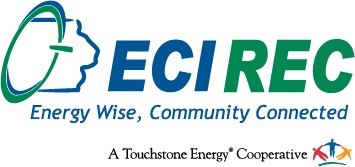There are more choices for lighting your home than you probably realize.The savings can add up - new lighting standards began in 2012. Upgrading 15 inefficient incandescent bulbs in your home could save you about $50 per year. Since most of the bulbs also have longer life spans, you'll continue to save into the future. Nationwide, lighting accounts for about 10% of home electricity use.
Explore some of the most common options here. You can also jump over to the lighting section of energy.gov to explore even more lighting options for your home.
Incandescent Lighting

Incandescent lights have traditionally been the most common type of home lightning. They light up instantly, providing a warm light and excellent color rendition. You can also dim them. Incandescent lamps are the least expensive to buy, but because of their relative inefficiency and short life spans, they usually are more expensive to operate.
Halogen lamps—a type of incandescent lighting that uses tungsten filaments—achieve better energy efficiency than standard incandescent light bulbs. They also provide excellent color rendition. Halogens are more expensive than incandescent bulbs, but are less expensive to operate
Learn more about how incandescent bulbs compare to more energy-efficient options.
Fluorescent Lighting

Fluorescent lamps use about 25% of the energy used by incandescent lamps to provide the same amount of illumination (efficacy of 30–110 lumens per watt). They also last about 10 times longer (7,000–24,000 hours). Improvements in technology have resulted in fluorescent lamps with color temperature and color rendition that are comparable to incandescent lamps.
Compact fluorescent lamps (CFLs) combine the energy efficiency of fluorescent lighting with the convenience and popularity of incandescent fixtures. Consider changing to CFL bulbs for a more energy-efficient home.
LED Lighting

The light-emitting diode (LED) is one of today's most energy-efficient and rapidly developing lighting technologies. Widespread use of LED lighting has the greatest potential impact on energy savings in the United States. LEDs last longer, are more durable, and offer better light quality than nearly any other type of lighting available. LEDs are directional—much like a flashlight—which makes them ideal for applications such as recessed downlights and task lighting.
Much of the above text is courtesy of energy.gov
